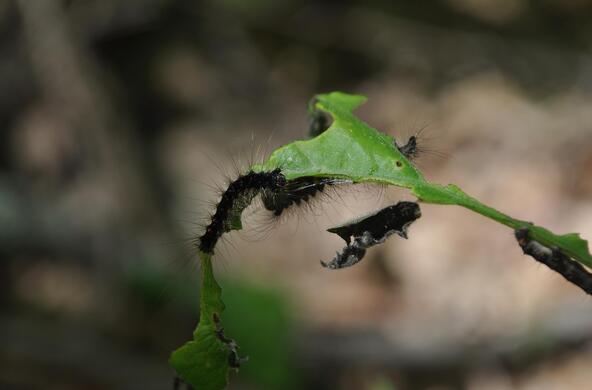An expanding army of insects is draining the life out of forests from New England to the West Coast.
Scientists say bugs such as the hemlock woolly adelgid and emerald ash borer, both native to Asia, are driving some tree species toward extinction and are causing billions of dollars a year in damage.
The situation is expected to worsen. According to a study in the scientific journal Ecological Applications, a projected 63 percent of the country's forest is at risk through 2027.
Insect pests can undermine forest ecosystems. For example, scientists say, several species of hemlock and almost 20 species of ash could go nearly extinct in the coming decades.
Such destruction would do away with a critical sponge to capture greenhouse-gas emissions, shelter for birds and beneficial insects, and food sources for bears and other animals. Dead forests also can increase the danger of wildfires.
Although they're small, bugs can easily overwhelm big trees with sheer numbers. "They drain the resin that otherwise defends the tree," said Matt Ayres, an ecologist who worked on the study. "Then, the tree is toast."
Scientists say that the pest problem has worsened because of global trade and a warming climate and that there are a few methods to combat it. Those include genetic modifications, moving trees to new locations and introducing bugs that feed on pests in their native lands.
To fight the emerald ash borer, the United States Agriculture Department has released wasps that feed on the insect. But some scientists worry about introducing another pest, and others complain the wasps aren't effective because they can't eat enough of the fast-breeding pests to make a difference.
"The hope is to create balance: balance between predator and prey," said Ken Gooch, forest health program director for the Massachusetts Department of Conservation and Recreation.
Genetic modifications also offer promise.
On a research farm in Syracuse, New York, are rows of 10-foot-tall chestnut trees tweaked with a wheat gene to make them resistant to chestnut blight, a fungus that came from Japan more than a century ago and has killed millions of trees. Genetic engineering could likewise be applied to fight insects, scientists say.
An alternative strategy, also a slow one, is to plant trees 50 or 100 miles away from their normal range so they can escape pests.
To stop the next pest from entering the country, researchers including Gary M. Lovettof the Cary Institute of Ecosystem Studies in New York propose measures such as switching from solid-wood shipping material, which can harbor insects, and restricting imports of certain shrubs and trees.
Nonetheless, Lovett said, new pests are inevitable. "We have this [growing] global trade," he said, "so we will get a lot more of these."







